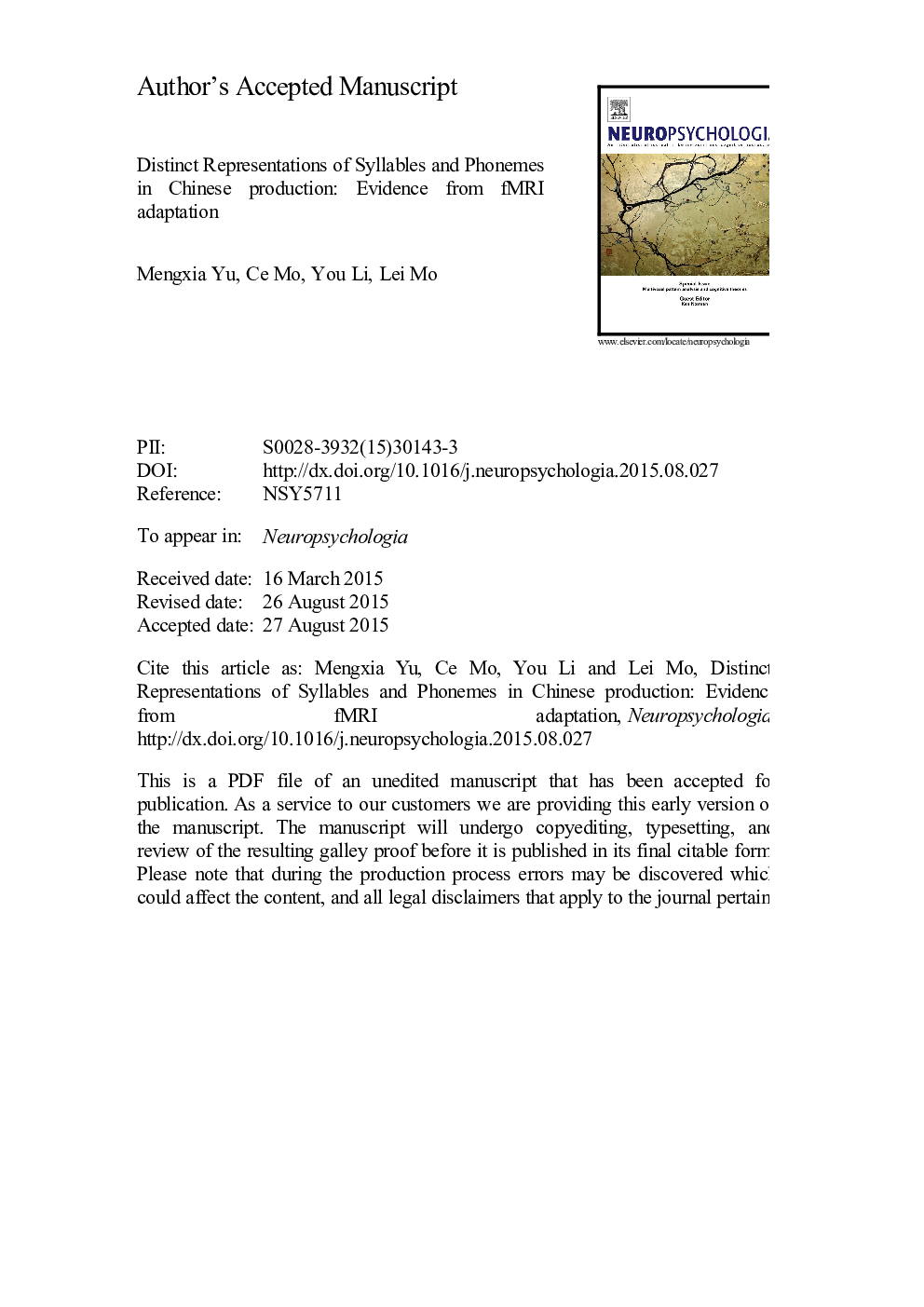| Article ID | Journal | Published Year | Pages | File Type |
|---|---|---|---|---|
| 7319771 | Neuropsychologia | 2015 | 27 Pages |
Abstract
Existing linguistic theories have converged on the fundamental role of syllable and phoneme as the phonological production units that drive articulation in most alphabetic languages, while much remains controversial concerning the logographic Chinese because there is no conclusive evidence of the neural correlates of syllabic and phonemic processing during Chinese speech production. Here, fMRI adaptation paradigm was used to explore the possibility of distinctive neural representations of phonemes and syllables when native Chinese speakers pronounced Chinese pseudowords. We found that bilateral basal ganglia (BG) exhibited evident neural adaptation effect for phonemic repetition, indicating independent neural representation of phonemes in the speech production network in Chinese speakers. Moreover, neural adaptation effect for syllabic repetition was found in bilateral superior temporal gyrus (STg). These findings thus suggest that, similar to alphabetic languages, both phonemes and syllables are phonological production units associated with distinctive neural representations in Mandarin Chinese and further implicate the universality of hierarchical phonological coding across different linguistic systems.
Related Topics
Life Sciences
Neuroscience
Behavioral Neuroscience
Authors
Mengxia Yu, Ce Mo, You Li, Lei Mo,
